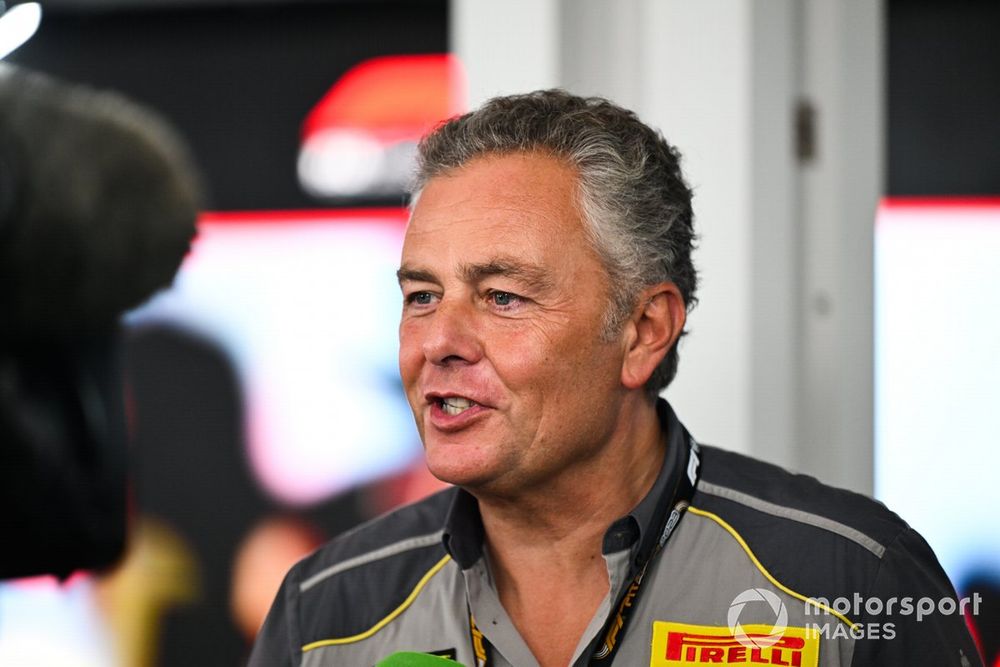As F1 teams have fully understood the new ground-effect regulations, they have found ways to increase the downforce and better manipulate outwash to improve their performance.
But one of the consequences of this is that it is getting much harder for drivers to follow each other, and that means tyres can overheat quickly if cars start sliding in the dirty air of a rival.
This is believed to have been a contributing factor in why overtaking has become harder, and the field spreads out so quickly in races now, as drivers have to get out of the turbulence of the car in front so they can better manage their tyre temperatures.
Pirelli has been aware of this problem for a while and undertook a great deal of analysis last winter to try to get to the bottom of what was causing the overheating issue – and how it could be addressed.
Tests have taken place with new tyre designs at Barcelona and Jerez, and the next run will take place at Suzuka after next month’s Japanese Grand Prix.
Speaking to Autosport about the improvements planned, Pirelli’s head of F1 and car racing Mario Isola said the focus right now was on a new construction to address the overheating.
Then, once that was finalised, Pirelli would shift attention to a new range of compounds to complement the improvements.
Mario Isola, Racing Manager, Pirelli Motorsport, is interviewed
Photo by: Simon Galloway / Motorsport Images
“At the moment, we are focused on the construction with a higher level of integrity,” he said. “It will be more robust, with new materials.
“We are testing the new materials also to avoid increasing the weight, because the target is to have the same weight.
“The next test is at Suzuka, where we are taking some of these new compounds. We had also another idea that we tested in Barcelona and Jerez about the tread, which also gave us a good indication on the overheating reduction, as it was more consistent.
“The new construction could help in reducing overheating by making the [tyre] footprint work better, and distributing better the pressure and the temperature.”
While practical work is taking place on track to develop the new range of tyres, Isola said that analysis continued in trying to get to the bottom of why tyre overheating issues have become a factor again with the current ground-effect cars.
He explained: “We started in 2022 with the 18-inch tyres and the general comment [from drivers] was: ‘We can follow each…
Click Here to Read the Full Original Article at Autosport.com – Formula 1 – Stories…

